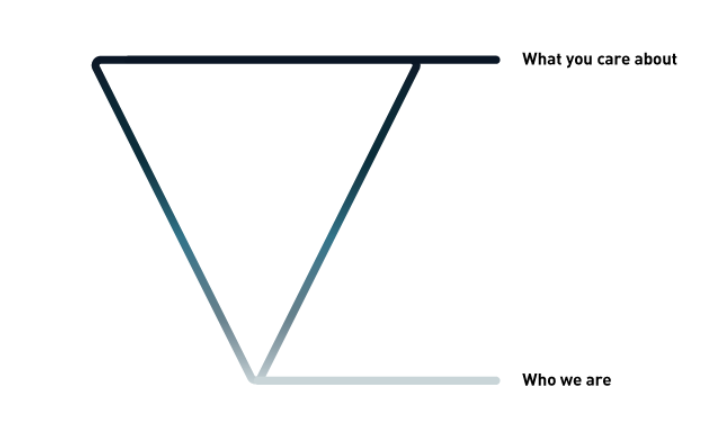Here’s a test: Scan a few of our recent blog posts and see if you can tell what my company does.
You might be able to guess from the name of our site (yeah, it’s a dead giveaway) but can you tell from the content we write and share?
I’m guessing not. And that is exactly the point. It’s also a basic premise about good content publishing, beautifully illuminated by Steve Bryant writing in Medium.
“Every decision begins with the audience in mind,” Bryant writes.
“The publication leads with what’s most relevant, timely, and interesting to the audience,” he continues. “Who the publication is, who the editors are, where the pages are printed or the pixels positioned, why this publication may be better than another publication, all of that — it’s incidental. The publication isn’t the point. The audience is the point.”
It makes absolute sense – and it’s a basic premise of good journalism. The inverted pyramid style of writing goes for the widest audience possible at the opening of the story, gradually narrowing the focus down to a tightly focused (and, if you’ve done it right, highly relevant to your business) reader.
“The audience is the point because what the audience cares about leads naturally to who the publication is.”

Image source: Medium.com
Bryant goes on to explain why so many brands are really bad at storytelling, saying “most brands do not function like upside-down triangles. Brands are right side up.”

Image source: Medium.com
The conversion strategy of most brands is based on telling their story to enough people so that some of them become customers.
“A brand wants people to aspire to its product. To a brand, their product is the customer’s goal,” Bryant continues. “But people don’t aspire to products. People aspire to feelings that products give them. This is true for everything from candy bars to sports cars to cloud-based document storage solutions.”
And this is exactly why, he believes, most brands are terrible storytellers. They don’t take a long-term view to their content efforts and link everything too closely to sales. Content is about awareness, engagement and visibility – not capturing and selling.
“The point of an awareness strategy is not to capture dollars by selling a thing. The point of an awareness strategy is to capture attention by selling an idea adjacent to that thing,” Bryant explains.
“By capturing attention with ideas you own that idea. By owning the idea, you own the audience. By owning the audience you can tell the audience what to pay attention to, and thereby define the marketplace.”
This kind of relationship with your audience is the long-term result of creating and publishing content that your audience cares about; it will never happen if you just publish content about your brand. They don’t care.
The solution is so simple, yet surprisingly difficult for a lot of brands to implement:
“To succeed, you just need to stop talking about yourself … and start talking about what your audience already cares about.”
That’s why we talk about publishing strategies, social media awareness, magazine design, editorial ideas, trends in direct mail, modern cataloging best practices – you know, all the stuff our customers (people who create and publish magazines and catalogs) care about.
Let’s have more of that.
